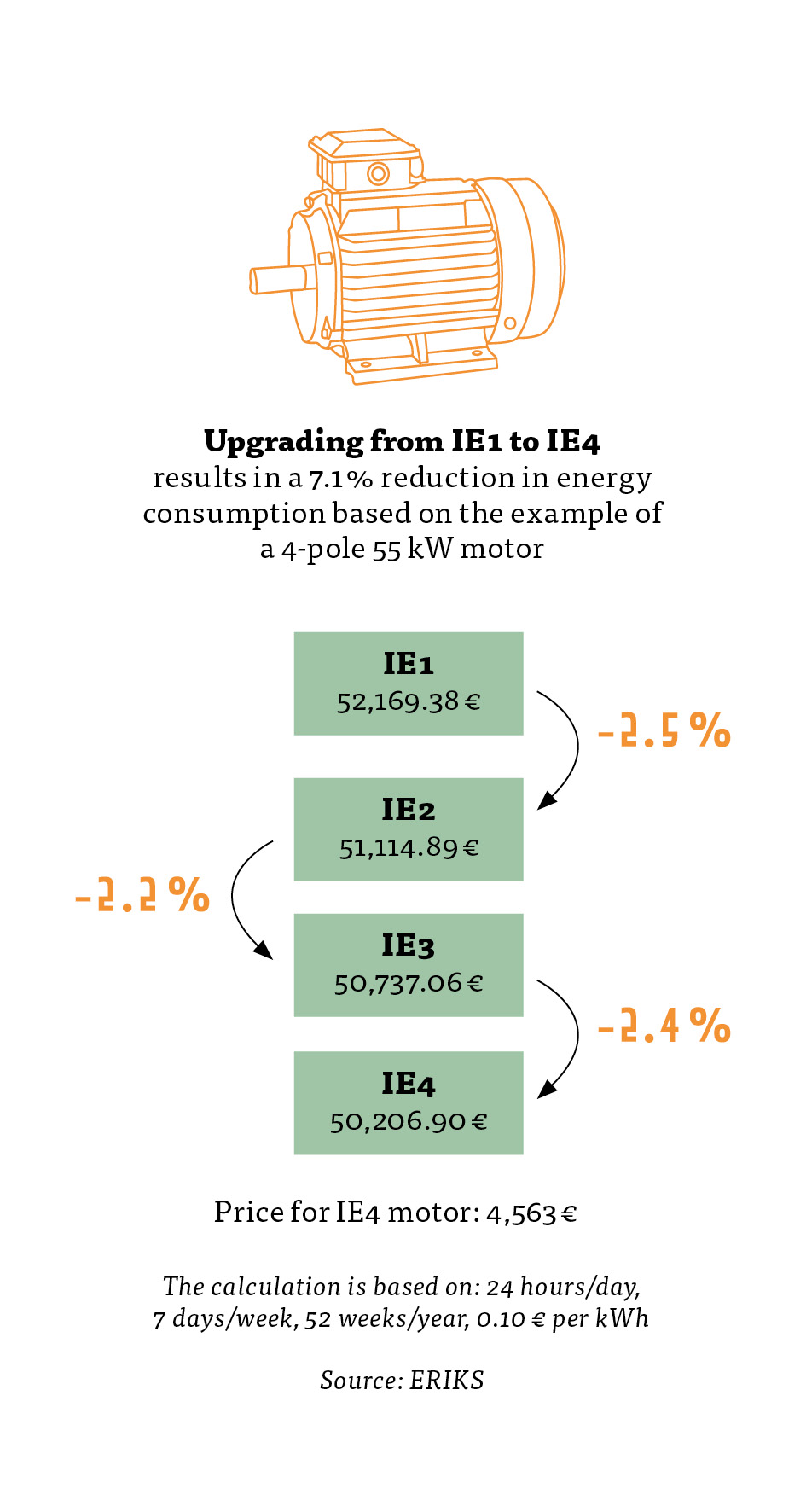Industry is responsible for 25 percent of global CO2 emissions, with the majority stemming from inefficient drive systems and process heat. Emissions can be significantly reduced through the use of energy-efficient technologies and electrification.
According to the International Energy Agency, the industrial sector was directly responsible for emitting nine gigatonnes of CO2 in 2022, accounting for a quarter of the global CO2 emissions from the energy system.
Focus on Drive Technology
Electric motors and drive systems consume around 70 percent of the energy used in industry. Therefore, the use of energy-efficient motors presents a significant opportunity to reduce emissions. To describe the energy efficiency of an electric motor, the international standard IEC 60034-30-1 defines energy efficiency classes. These are classified using so-called IE codes, with five classes currently standardised worldwide, ranging from IE1 “Standard Efficiency” to IE5 “Ultra Premium Efficiency.” However, the IEC 60034 standard does not specify when each efficiency class should be used; this is determined by regional legislation. Today, nearly all markets have requirements for the minimum efficiency of electric motors.

High savings Targets in the EU
In the European Union, these requirements are regulated by Commission Regulation (EU) 2019/1781, which sets out ecodesign requirements for electric motors and variable speed drives. The latest stage of this regulation came into force in July 2023, requiring all electric motors with a power range between 75 and 200 kilowatts to meet at least the IE4 international energy class. Similarly, IE classes for inverters and IES classes for inverter-motor combinations are also defined. The European Union expects that this regulation will save more than 100 TWh of energy annually by 2030.
Challenge of Process Heat
After electric drive technology, the generation of process heat is the largest contributor to greenhouse gas emissions in industry. “Process heat” refers to the heat needed for specific technical processes in the production, further processing, or refinement of products. Today, this heat is mainly generated by fossil fuels. This is especially true in the production of steel and cement, as well as in the chemical industry, where high temperatures exceeding 500 degrees Celsius are required.
Alternatives for the Steel Industry
Depending on the required temperature level, different technologies are available to reduce emissions in process heat generation. For example, electric arc furnaces (EAF) and direct reduced iron (DRI) processes can significantly reduce CO2 emissions in the steel industry. In the direct reduction of iron, hydrogen is used to reduce iron ore, producing water vapour instead of CO2 as a byproduct. Compared to conventional methods, this technology can reduce CO2 emissions by 50 to 90 percent. Electric arc furnaces have been a proven electric technology for melting iron for decades, although they have mainly been used for recycling steel scrap.
In gas-fired industrial processes that require very high energy density, hydrogen may be more advantageous than electricity. In such cases, direct electrification is often not yet technically mature or would require significant modifications to existing facilities.
Heat Solutions for Industry
Industries such as food production or paper, wood, and pulp manufacturing primarily require heat in the low to mid-temperature range. Various technologies are already available to generate this heat with low emissions. Geothermal energy can provide temperatures up to 180 degrees Celsius, and even higher temperatures can be achieved through the additional use of high-temperature heat pumps, which in pilot plants can already reach up to 300 degrees Celsius. Power-to-Heat technologies, such as electrode boilers, induction furnaces, and other electrothermal processes (such as high-frequency heating and infrared heating), are also suitable for electrification.
Time is of the Essence
Industry is undoubtedly one of the sectors where decarbonisation is most challenging: low-carbon technologies for many processes are still in development or are too expensive. However, decisions on measures to reduce industrial CO2 emissions must be made now. Many industrial facilities have lifespans of several decades, and if the industry is to be climate-neutral by 2050, the framework must be set now. This will not be possible without government measures, particularly to mandate CO2 emission reductions and mitigate the risks associated with developing and deploying new technologies.



